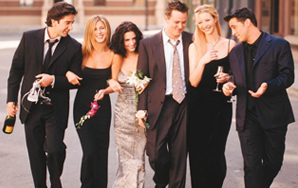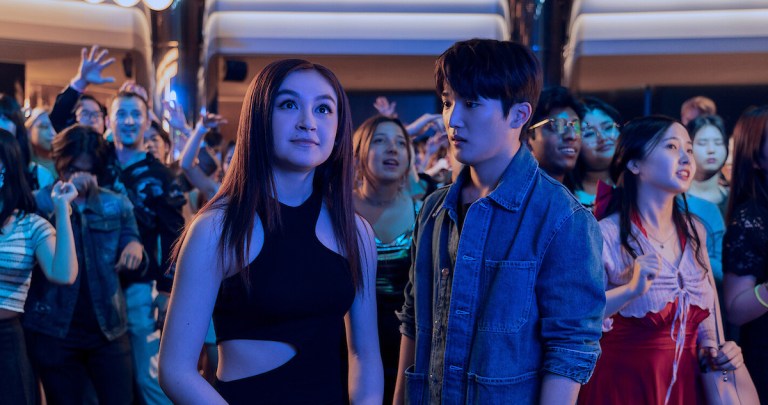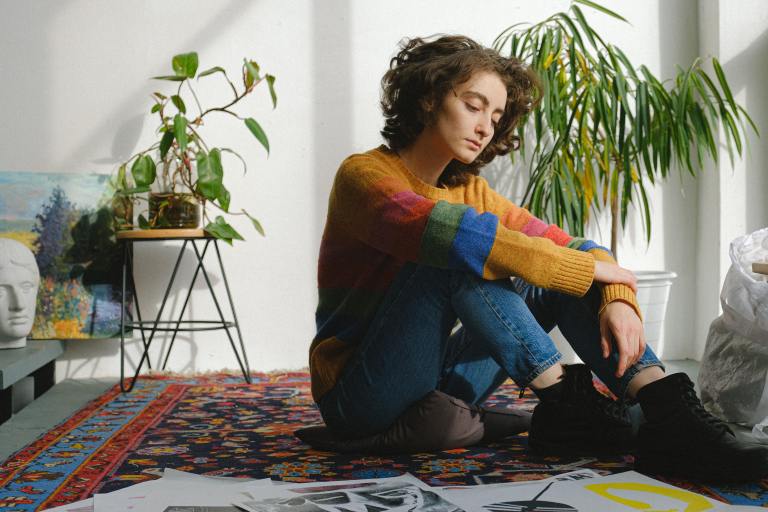Why I Still Need Friends
This was 1998, and the Friends’ cushy lifestyle still looked attainable. There was no war (that we were aware of in rural California), no $13 trillion dollar deficit, no 9.2% unemployment rate, no housing collapse. We lived in a Disneyland of sub-prime mortgages and college loans, APR financing and shopping malls and our Boomer parents…
By Rachel Dovey

In the last two months I’ve watched my magazine of employment fold, lost my job, moved into a garage and cried in public four times. So I’ve done what I always do when life gets rough—I’ve started watching Friends.
I’m a little ashamed of my obsession with the ‘90s sitcom. It’s a cliché-and-laugh-track-fueled half-hour, in which the characters are just as likely to make a fart joke as to sing a song about pubic hair. But that doesn’t matter. No critique can undermine my connection to Monica’s purple, rent-controlled apartment, with its copper saucepans and mismatched chairs.
I was thirteen the first time I watched Friends. My mom had just broken up with her girlfriend of four years, and we had moved out of the country house we shared with her into a singlewide lined with faux-wood paneling. My mom had been sick for a year with what we later found out to be chronic fatigue syndrome, but at the time, we feared the worst. It was a hard year, but the highlight of each week was Thursday at 8pm, when Friends would air on NBC. We would grab our dinner plates and settle down on the couch in our dark living room, the 14-inch screen our only source of light.
At the time, my attraction to Friends was part escapism, part hope. The show sold mid-20s mediocrity in its opening credits: “Your job’s a joke, you’re broke, your love life’s DOA.” But that’s not what I saw. Monica & co. lived in Manhattan, (mostly) worked at creative jobs they (mostly) loved, ate out every night and were, of course, beautiful. To a zitty, insecure middle-schooler, the fantasy looked pretty good.
But it was more than that. This was 1998, and the Friends’ cushy lifestyle still looked attainable, at least to a teenager. There was no war (that we were aware of in rural California), no $13 trillion dollar deficit, no 9.2% unemployment rate, no housing collapse. We lived in a Disneyland of sub-prime mortgages and college loans, APR financing and shopping malls and our Boomer parents waved their magic Mastercards and told us that, someday, we could be anything we chose.
I’m 25 now, Rachel’s age in Episode One. I’ve been lucky enough to do some wonderful things in my twenties. I married my best friend. I borrowed enough money to get an English degree and, after that, got an editorial job with the now-deceased culture magazine Paste. I lived my 13-year-old dream for six years on the last cent of a dying economy, but now I’m unemployed in rural California, saddled with liberal arts-degree debt. So I’m applying for retail jobs and watching Friends.
Twelve years later, my attraction to the show is still part escapism and part hope. It’s nice to remember that time, when our biggest federal scandal involved the president’s sex life, when Jennifer Aniston was Hollywood’s golden girl instead of tabloid-fodder, when Cougar Town didn’t exist—a time when my own adulthood was as much a fantasy as that half hour on NBC.
But it’s more than that: I see the failure those opening credits advertised now. In “The One With Ross’s Sandwich,” Ross flies into a public rage when a manager steals his gravy-soaked turkey sandwich. He’s just been evicted from an apartment and filed for his second divorce. As he puts it, “Somebody ate the only good thing going on in my life.” Though stocked with pretty people in flattering lighting, Friends wasn’t about success—if it had been, myself, my mom and 52 million other Americans wouldn’t have been able to relate. The sitcom showed us that even in our wealthy, sushi-eating daydream, life wouldn’t be perfect. It showed us that we weren’t alone. ![]()




